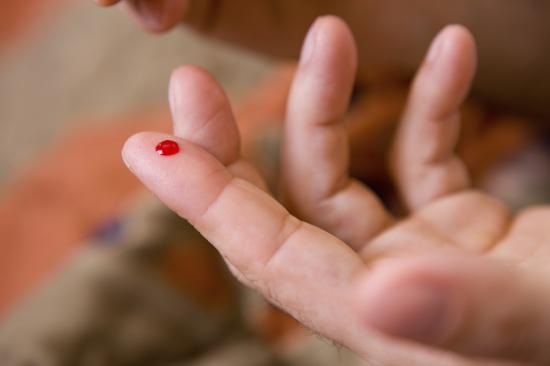提到血糖检测,不少人第一反应是取指血。对需要经常检测血糖水平的人来说,每天多次取指血是痛苦过程。如今,美国研究人员正在研究用眼泪测血糖的方法,希望有一天能代替血液检测。
研究报告由最新一期《分析化学》月刊发表。

美国密歇根大学研究人员用12只白兔做实验。他们发现,白兔眼泪中的葡萄糖水平与血液中的血糖水平有关。从理论上说,检测眼泪中的葡萄糖水平就能判定血糖水平。
研究报告写道,白兔眼泪中的葡萄糖含量是血液中的五十分之一至三十分之一,因此,研究人员必须制造出足够敏感的试纸,才能只使用少量眼泪就测量出血糖水平。
研究人员说,白兔实验证明眼泪中葡萄糖水平与血糖水平存在关联,接下来他们将在其他动物身上进一步测试,随后在健康人和糖尿病人身上试验。
美国糖尿病学会统计数字显示,美国当前有糖尿病人约2580万人,还有约700万人未确诊。
美国临床内分泌学家协会的乔治·格伦伯格说,糖尿病人血液中的葡萄糖含量高,部分人是因为胰腺停止分泌胰岛素,部分人是因为身体细胞对胰岛素产生抵抗,无法控制血糖水平。
有些糖尿病人需要经常检测血糖水平,“一天两次、三次、四次甚至十次,这是因为血糖水平在一天之内变化颇大”。
对医生来说,准确的血糖测试结果是确诊以及治疗糖尿病的最重要依据。目前为止,还没有一种方法能代替血液检查。
与密歇根大学研究人员一样,亚利桑那州立大学与梅奥诊所研究人员也在攻克眼泪测血糖的难关。
亚利桑那州立大学生物医学工程师杰弗里·拉贝尔说,他们的目标是研制出一种通过接触眼白提取眼泪的血糖试纸。
拉贝尔说,用眼泪测血糖的设想产生于1937年。眼泪给研究人员带来三大挑战:会蒸发、葡萄糖浓度低、量少。另外,研究人员还必须关注检测过程的安全性,不能让试纸刺激眼球。
格伦伯格也说,眼泪检测可能永远无法代替血液检测,因为兔子实验表明,每只兔子眼泪中的葡萄糖与血糖间的关联不尽相同,因此,就算眼泪测血糖技术有一天应用于人类,每名用户也必须先校准血糖仪。(生物探索)
相关英文论文摘要:
Measurement of Tear Glucose Levels with Amperometric Glucose Biosensor/Capillary Tube Configuration
An amperometric needle-type electrochemical glucose sensor intended for tear glucose measurements is described and employed in conjunction with a 0.84 mm i.d. capillary tube to collect microliter volumes of tear fluid. The sensor is based on immobilizing glucose oxidase on a 0.25 mm o.d. platinum/iridium (Pt/Ir) wire and anodically detecting the liberated hydrogen peroxide from the enzymatic reaction. Inner layers of Nafion and an electropolymerized film of 1,3-diaminobenzene/resorcinol greatly enhance the selectivity for glucose over potential interferences in tear fluid, including ascorbic acid and uric acid. Further, the new sensor is optimized to achieve very low detection limits of 1.5 ± 0.4 μM of glucose (S/N = 3) that is required to monitor glucose levels in tear fluid with a glucose sensitivity of 0.032 ± 0.02 nA/μM (n = 6). Only 4–5 μL of tear fluid in the capillary tube is required when the needle sensor is inserted into the capillary. The glucose sensor was employed to measure tear glucose levels in anesthetized rabbits over an 8 h period while also measuring the blood glucose values. A strong correlation between tear and blood glucose levels was found, suggesting that measurement of tear glucose is a potential noninvasive substitute for blood glucose measurements, and the new sensor configuration could aid in conducting further research in this direction.







